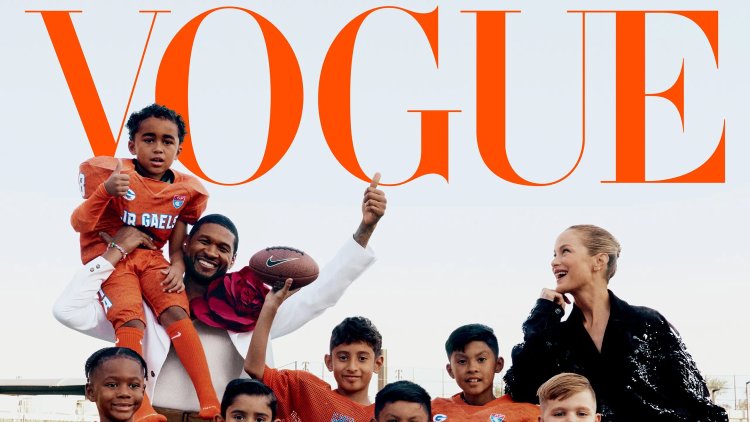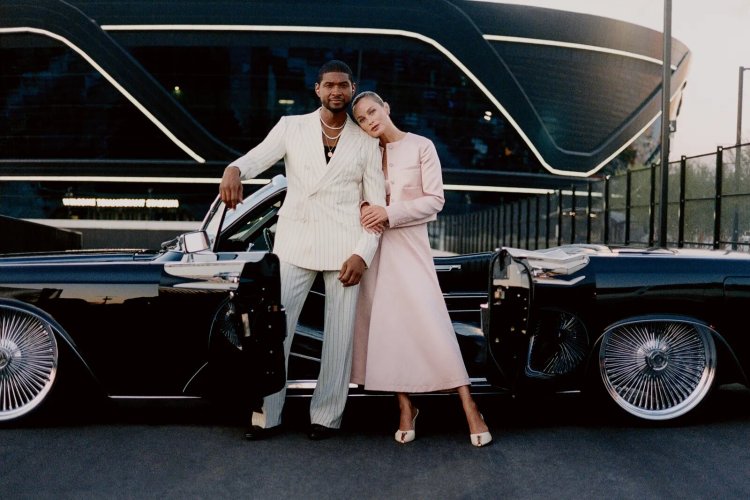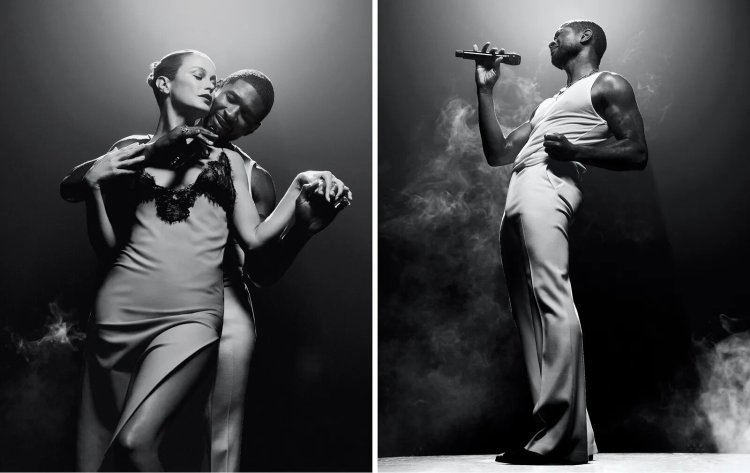OORO: Vogue's Winter 2024 Cover Falls Short in Celebrating Black Excellence
She acknowledged there were too few employees of color, and took full responsibility for mistakes made during her 32-year tenure.

In June 2020, Anna Wintour, the longtime editor-in-chief of Vogue magazine, admitted to making mistakes and publishing intolerant content, as well as not doing enough to promote black staff and designers at the fashion publication.
In a company-wide internal memo written amid global unrest and protests sparked by the infamous killing of George Floyd, Wintour apologized to staff at the magazine for “publishing images or stories that have been hurtful or intolerant”.
She acknowledged there were too few employees of color, and took full responsibility for mistakes made during her 32-year tenure.
“I want to say plainly that I know Vogue has not found enough ways to elevate and give space to black editors, writers, photographers, designers and other creators.
"We have made mistakes too, publishing images or stories that have been hurtful or intolerant. I take full responsibility for those mistakes.” she asserted.

Usher wears a Dolce & Gabbana jacket and pants, Bally boots, Kwiat, and David Yurman jewellery. Murphy wears an Altuzarra jacket, top, and skirt, and Schiaparelli shoes. /VOGUE
Fast Forward to January 2024, barely three years after Wintour’s apology, the supposed fashion-forward and approachable legacy magazine seems to have dropped the ball if it wasn’t par for the course.
The publication recently unveiled its 2024 winter digital issue featuring Usher Raymond, a globally acclaimed dancer and musician, as the cover star.
The edition quickly drew backlash for relegating the singer – who recently performed at the Super Bowl halftime show – to the corner behind an all-white youth football team and a little-known white supermodel by the name of Carolyn Murphy.
Fans across the globe expressed their displeasure with the magazine cover. They wondered why Usher, a record-breaking multiple award-winning recording and performing artist, was barely visible on his magazine cover in a pullout highlighting his moment.
They criticized Vogue for not giving Usher a solo cover and making him share the spotlight with seemingly ‘random people’.The model is also photographed alongside Usher in many of the images included in the online Vogue cover story.
Taking to Facebook, one user named Karen Marie Jenkins wrote: “This looks like little league football and I don't know why the model is there and Usher is lost in the crowd. Another case of the magazine not letting folks shine on their own merit….instead watering it down. Tired of Vogue.”
Another Facebooker named Malcolm King Harris ranted by saying “Vogue literally went out of their way to say - ‘USHER is not important enough to be on our cover alone…’ Sadly, THEY ARE WRONG!!! He is as relevant today than former supermodel Carolyn Murphy could ever be in 2024!!! PERIOD!!!”
The latest irksome magazine cover is just one of many instances in which the highly-esteemed publication, which is famously nicknamed the world’s ‘fashion bible’, frames black men in a disrespectful light.
In 2008, the first Black man featured on the cover was LeBron James alongside supermodel Gisele Bündchen. The issue’s theme of “body” justified the pairing of a superstar athlete and a top model.
However, this caused an uproar. Audiences rightfully poked holes in the similarities of the cover – photographed by Annie Lebowitz. Anni – to a distasteful World War Two poster depicting a German soldier as an ape kidnapping a white woman.
The poster uses the imagery of King Kong holding Fay Ray to dehumanize Germans. It was effective as propaganda because it tapped into the allegory for racist white fears of Black and Native people.
Six years later, the magazine was on the receiving end again after bringing on its second Black man on its cover, the then-married celebrity couple, Kanye West and Kim Kardashian in 2014.
While it was Kardashian who got a lot of heat for this cover, critics felt she was undeserving and too “trashy” for the editorial. While unfair to her, it did mark a burgeoning pattern by Vogue of putting a fair-skinned white or white-appearing woman next to a Black man as the standard for a Vogue shoot.
“It is no secret that the media industry is experiencing an unprecedented level of disruption. This has upended legacy business models but has also created a wave of new opportunities. To successfully navigate this changing media landscape, the industry needs bold ideas and innovative strategies brought to life by broad and inclusive talent cultures.” Justin B. Smith, Chief Executive Officer of Bloomberg Media Group, opines in a piece published on Bloomberg.com.
“Media organizations must be open to change and uncertainty, and be comfortable in a place where we’re constantly incorporating new perspectives and challenging the status quo. I see this as our primary responsibility and the only way for our business to continue to be successful in the future,” he writes.
The Front Cover Image Matters a lot in Journalism
You may be wondering why I have taken my time to focus on this issue of Vogue magazine's front cover photos. You see, front covers on newspaper and magazine pages greatly stimulate public interest in current events and human-angle stories by attracting and retaining their attention.
A photograph is an instrument of communication. In journalism parlance, we say it tells the story. A photo album tells a story. When sequentially arranged, it promotes a historical picture as good as literature does.
In assessing a leader’s ability, Smith advises that we have to look not only at what they do but how they do it.

Usher wears an Ami tank top. Alexander McQueen pants. Murphy wears a Gucci dress. /VOGUE
“Do they lead from the front? Do they roll up their sleeves? Do they model the type of behaviour essential to creating a work culture that is not just successful and efficient, but also inclusive and tolerant, where respect and selflessness are valued?”
“Leaders have to do this work day in and day out. It’s not enough to talk about what you want the company to be — you must represent it.” he laments.
We also know that a story, no matter the vitality it has, needs a photograph to enhance its strength. Photographs are visual magnets and they arrest the attention of readers.
In modern-day journalism, glossy pictures and even black-and-white pictures of celebrities thrill readers. For these reasons, we say that front cover pictures are entry points to a publication. Readers might first see the loud headlines, but from literature, readers first cast a glance at the picture before continuing with grey matter.
With February being a Black History Month in the US, Vogue and its parent company, Conde Nast, ought to have done better with their winter issue’s front page cover photo.
Usher’s exceptional contribution to modern-day pop culture has enriched the industry through his powerful lyricism, diverse creativity and groundbreaking performances. His success is a sheer depiction of the creativity of Black professionals in the media and arts not only entertains but also challenges societal norms, fostering inclusivity and inspiring future generations.
Ooro George is a Kenyan journalist, art critic, digital stories, and cross-cultural curator. You can reach him via LinkedIn here, through email: oorojoj@gmail.com and on Twitter @OoroGeorge






